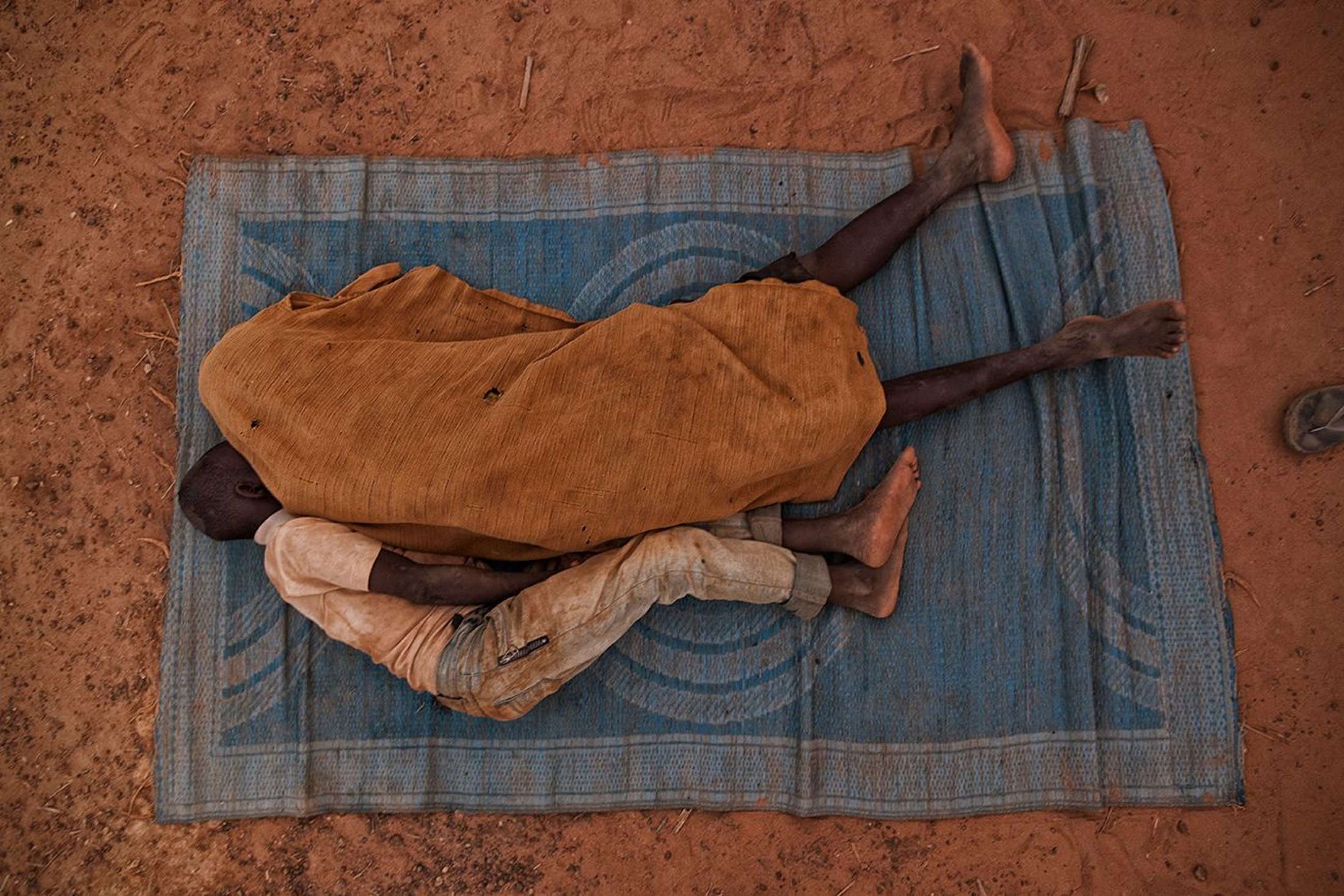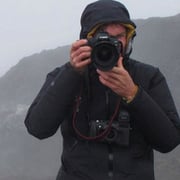A government civil servant comes to locate a new gold vein near the surface. His detector can locate gold up to a meter deep. He is paid by the miners, but does not come cheap. The women usually dig on the surface, and the men go underground into the pits. © Matjaz Krivic
A gold digger’s home. Gold seekers from all over Burkina Faso come to work at sites like Djuga, where they live in straw boxes without any infrastructure at all. © Matjaz Krivic
Arzuma, 28 years old. Arzuma's "office" is a hole, 20 meters deep. It is really nothing more than a narrow, dangerous and claustrophobic pit. The air there is thick, hot and humid with constant dust. Here, he is ready to go into his pit to do his night-shift after—well, after he finishes his cigarette. Working in the night is better, he says, because the air is a bit cooler. Finalist, LensCulture Exposure Awards 2015. © Matjaz Krivic
Arzuma, 28 years old. The mines, as deep as 50 meters, are dug by hand by men, women and children.There are always ropes for the buckets of ore but not always for the boys who scrabble up and down the pits, finding footholds and hand holds in the dirt walls. Losing grip here could be fatal. Finalist, LensCulture Exposure Awards 2015. © Matjaz Krivic
Tabiani, 17 years old. Tabiani has been digging a new pit with his team for the past week. Currently they are at the depth of five meters. They hope to strike a vein of gold soon. These pits become unusable in the rainy season because the ground here is dangerously fragile. Finalist, LensCulture Exposure Awards 2015. © Matjaz Krivic
"Here, the ground is solid, but sometimes the earth is very fragile. Cracks appear in the hole and that’s scary," says Arzuma, 24, while he pulls the heavy bag filled with stones out of his 20 meters deep hole. © Matjaz Krivic
Saleyman, 51 years old. Saleyman and his son are getting out of their mine with a load of ore. For the last five years, Saleyman has been working at the site near Gangaol. Finalist, LensCulture Exposure Awards 2015. © Matjaz Krivic
Bandia, 24 years old. Praying areas are often set to the side of the entrances to the mines.
Here, Bandia is facing Mecca at his own praying spot, where he tries his best to pray five times a day. Finalist, LensCulture Exposure Awards 2015. © Matjaz Krivic
At midday, the miners gather for lunch, usually it's a bowl of rice with some oil and a bit of fish, eaten by hand from a communal cooking pot. © Matjaz Krivic
Women dig on the surface where they are repeatedly separating the heavier particles from dust, after which, they will pan it for gold. © Matjaz Krivic
Mustafa, 34 years old. Mustafa Yatra has been working for more then ten years in the mines around Bani. Seven months ago, after an dynamite explosion in a pit which destroyed his lungs and weakened his heart, he had to stop working. The doctors in Bani are not able to set the diagnosis precisely, so he was diagnosed with tuberculosis, a very common disease among miners. Since then, he has had to pay more than 300 euros just for medications. He is slowly dying in his bed. Finalist, LensCulture Exposure Awards 2015. © Matjaz Krivic
Sulayman, 51, at his mine near Gangaol shows off a piece of gold that he will try to sell to a local dealer from Bani. "It is the time for holidays" he says. "I'll buy myself a new shirt to look good for 'Fete de Ramadan.'" © Matjaz Krivic
Saleyman, 51 years old. Standing at the bottom of a hole which not so long ago was full of rain water. In the dry season, when a hot dry wind from the Sahara (the harmattan) blows, he has to buy water for panning. Finalist, LensCulture Exposure Awards 2015. © Matjaz Krivic
The children, who have been working since sunrise, literally sleep in the dirt beside the hole where they work. Nuru, 13, and Kongo, 15, are covered with just one blanket and sleep close to each other to keep warm during the night. © Matjaz Krivic
Nuru, 13, cannot recall how long he has worked here. He has never been to school, and does not know how to read or write. He is upset because his brother, whom he works with, is angry at him for not processing enough material through a machine that they have to pay for daily. However, mining is still better than working on the fields back home. © Matjaz Krivic
Abdul, 14, is one of hundreds of children working at the Djuga mines. In the rainy season, there is water to wash off the dust after a long day. In the dry season, the water is gone. © Matjaz Krivic
Small flakes of gold on an old scale are ready to be legally sold to a government-approved dealer at an official price. They will undoubtedly turn a blind eye to the children of the mines who suffer and die dreaming of their very own "El Dorado" for the sake of our smartphones. © Matjaz Krivic




